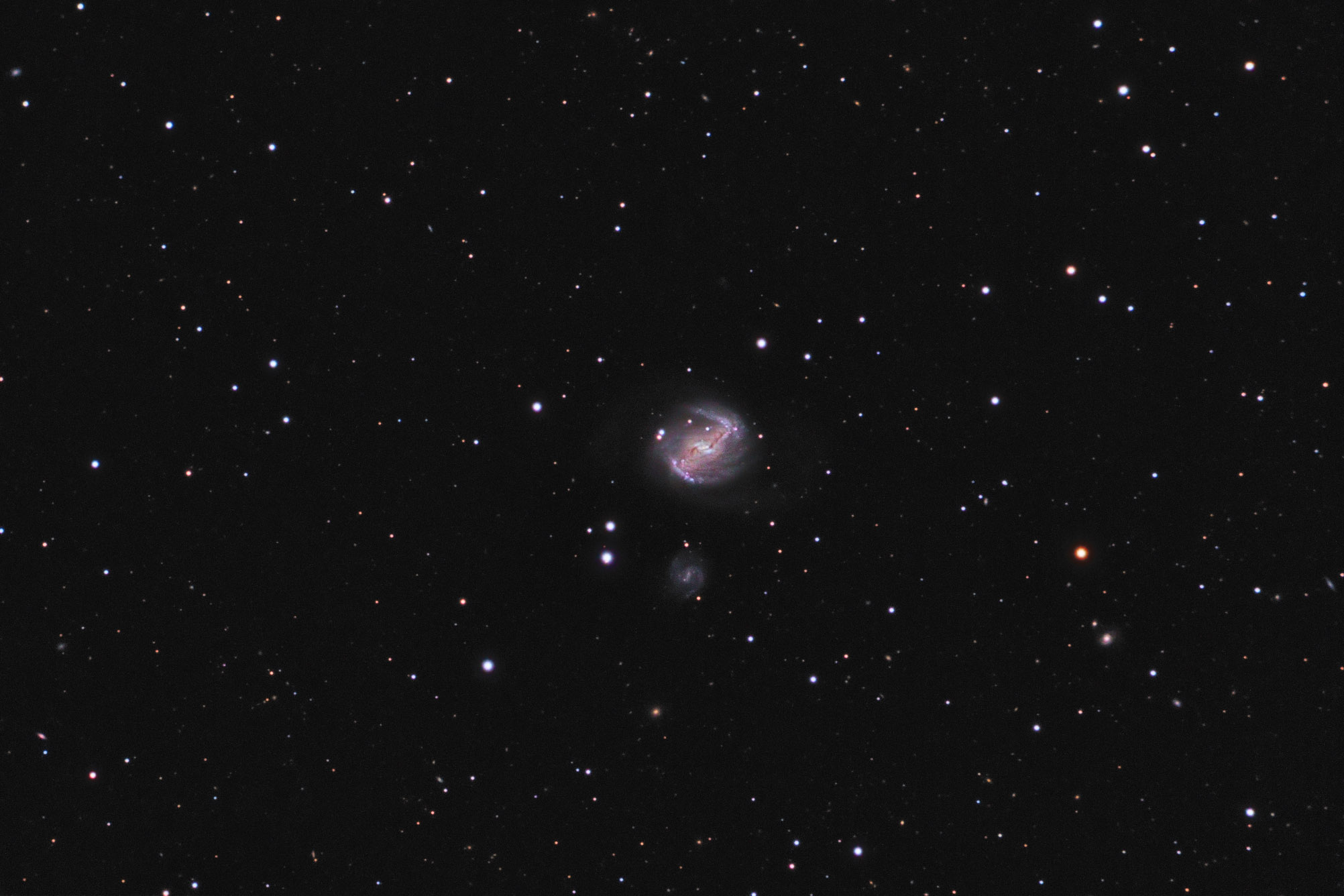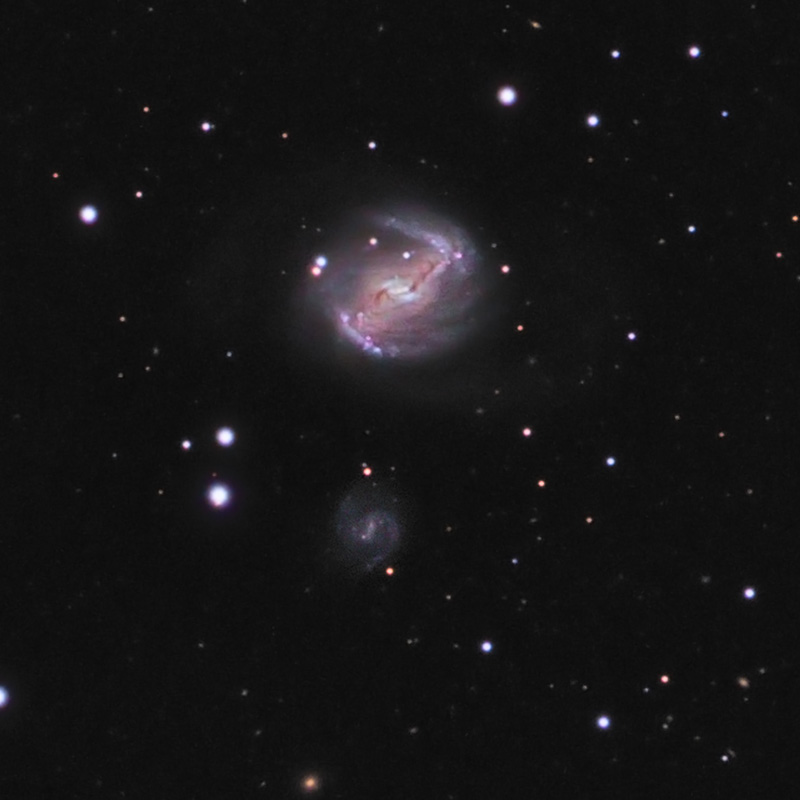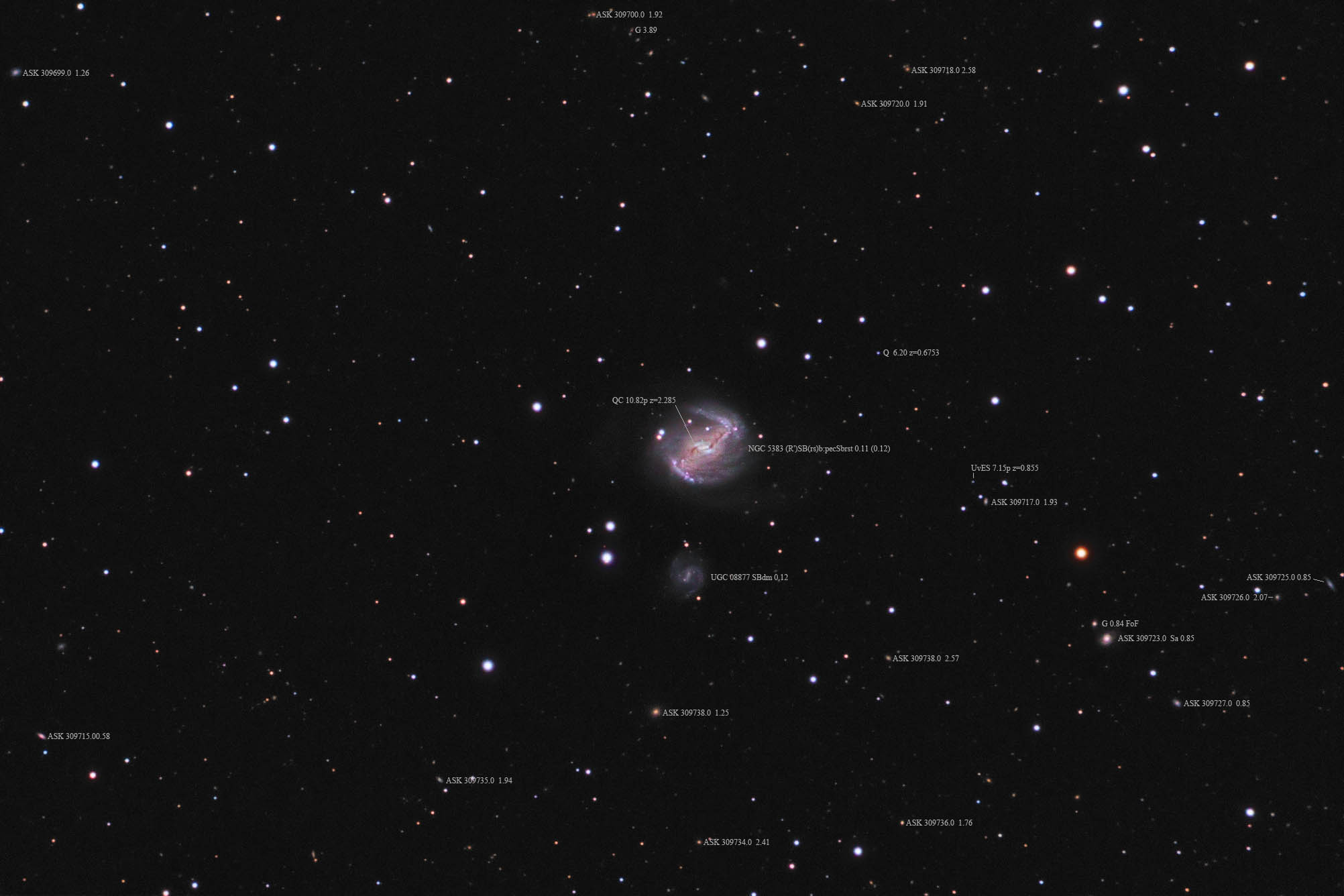| Description | Images |
Object name: NGC5383Designation(s): NGC5383, UGC08877, NGC 5383 is a rather strange looking barred spiral in Canes Venatici about 110 million light-years from us. It has two very faint plumes to the east and west sides. Including these the galaxy stretches some 165,000 light-years though the bright region spans only 77,000 light-years, still a respectable size for a spiral galaxy. It was discovered by William Herschel on Apr 9, 1787. While it made the Herschel II observing list that isn't what put it on my to-do list. Arp had a category for "wind effects" that this one seems to fit due to its windswept appearance. It has been much studied, mostly about how the dust lanes feed the starburst activity around the core at the inner ends of the bar. This has resulted in two round star clouds east and west of the core making it look like it has three cores though the two extras are made up of a few dozen supermassive, short-lived stars. Then above and below the core are two elongated regions of star formation containing far more but not as supermassive stars. In 2005 SN 2005CC was seen at the eastern end of the southern elongated cloud. Its spectrum was quite peculiar. While I found papers on it no one seemed willing to classify it other than say it had similarities to SN 2002CX which is considered a peculiar type IA supernova, whatever that means. Related Designation(s):1RXS J135702.8+415103, 2MASS J13570503+4150464, 2MASX J13570498+4150456, 2MASXi J1357047+415046, AKARI J1357051+415046, ATATS J135703.4+415058, CGCG 1355.0+4205, CGCG 219-033, FIRST J135704.6+415046, GALEXASC J135707.16+414734.4 , HDCE 0827 NED012, IRAS 13550+4205, IRAS F13549+4205, KUG 1355+420, LDCE 1006 NED015, LGG 361:[G93] 018, LGG 363:[G93] 004, MCG +07-29-022, MCG +07-29-023, MRK 0281, NGC 5383, NGC5383, NSA 144151, NSA 144153, NVSS J135704+415043, PGC 049618, PGC 049624, SDSS J135704.97+415046.5, SDSS J135706.87+414737.6, UGC 08875, UGC 08877, UGC08877, USGC U578 NED01, UZC J135704.9+415046, [M98j] 206 NED15, [RHM2006] SFGs 040, [TT2008] 150, [TT2008] 154, | Permanent link: https://images.mantrapskies.com/catalog/NGC/NGC5383-UGC08877/NGC5383L4X10RGB2X10.JPG |


